If the capillary tube is dipped in water is of insufficient length (l<h),will water overflow?
To determine whether water will overflow when a capillary tube of insufficient length (L < h) is dipped in water, we can analyze the situation step by step.
1. Understand the Variables:
- Let L be the length of the capillary tube.
- Let h be the height to which water is raised in the capillary tube.
2. Identify the Condition:
- The condition given is that the length of the capillary tube L is less than the height h (i.e., L<h).
3. Capillary Action:
- Capillary action is the ability of a liquid to flow in narrow spaces without the assistance of external forces. This phenomenon occurs due to the adhesive forces between the liquid and the walls of the tube, and the cohesive forces within the liquid itself.
4. Behavior of Water in the Tube:
- When the capillary tube is dipped in water, the water will rise in the tube due to capillary action until it reaches a height h. However, since the length of the tube L is less than h, the tube cannot accommodate the full height of the water column.
5. Will Water Overflow?:
- Since the length of the tube is insufficient to contain the height of the water column, the water will not overflow. Instead, it will rise to the maximum height that the tube can accommodate, which is equal to its length L.
6. Conservation of Energy:
- If the water were to overflow, it would imply a continuous increase in potential energy without an external energy source, violating the law of conservation of energy. Therefore, the water will simply rise to the top of the capillary tube and will not overflow.
7. Conclusion:
- The final conclusion is that when a capillary tube of insufficient length is dipped in water, the water will not overflow. Instead, it will rise to the length of the tube and adjust its meniscus shape accordingly.
Summary:
- Answer: No, water will not overflow from the capillary tube when its length is less than the height of water raised.
- Let L be the length of the capillary tube.
- Let h be the height to which water is raised in the capillary tube.
- The condition given is that the length of the capillary tube L is less than the height h (i.e., L<h).
- Capillary action is the ability of a liquid to flow in narrow spaces without the assistance of external forces. This phenomenon occurs due to the adhesive forces between the liquid and the walls of the tube, and the cohesive forces within the liquid itself.
- When the capillary tube is dipped in water, the water will rise in the tube due to capillary action until it reaches a height h. However, since the length of the tube L is less than h, the tube cannot accommodate the full height of the water column.
- Since the length of the tube is insufficient to contain the height of the water column, the water will not overflow. Instead, it will rise to the maximum height that the tube can accommodate, which is equal to its length L.
- If the water were to overflow, it would imply a continuous increase in potential energy without an external energy source, violating the law of conservation of energy. Therefore, the water will simply rise to the top of the capillary tube and will not overflow.
- The final conclusion is that when a capillary tube of insufficient length is dipped in water, the water will not overflow. Instead, it will rise to the length of the tube and adjust its meniscus shape accordingly.
- Answer: No, water will not overflow from the capillary tube when its length is less than the height of water raised.
Topper's Solved these Questions
- PROPERTIES OF MATTERBook:ICSEChapter:PROPERTIES OF MATTERExercise:MODULE 2(SURFACE TENSIONS)VERY SHORT ANSWER QUESTIONS
Explore 13 Videos
- PROPERTIES OF MATTERBook:ICSEChapter:PROPERTIES OF MATTERExercise:MODULE 2(SURFACE TENSIONS) SELECTED PROBLEMS( FROM THE DEFINITION OF SURFACE TENSION)
Explore 27 Videos
- PROPERTIES OF MATTERBook:ICSEChapter:PROPERTIES OF MATTERExercise:MODULE 2(SURFACE TENSIONS)LONG ANSWER QUESTIONS
Explore 9 Videos
- OSCILLATIONS Book:ICSEChapter:OSCILLATIONS Exercise:SELECTED PROBLEMS (OSCILLATION IN A TUNNEL BORED THROUGH THE EARTH)
Explore 2 Videos
- SAMPLE QUESTION PAPER - 01 Book:ICSEChapter:SAMPLE QUESTION PAPER - 01 Exercise:SECTION - D
Explore 12 Videos
Similar Questions
Knowledge Check
A capillary tube (A) is dipped in water. Another identical tube (B) is dipped in a soap-water solution. Which of the following shows the relative nature of the liquid columns in the two tubes?
A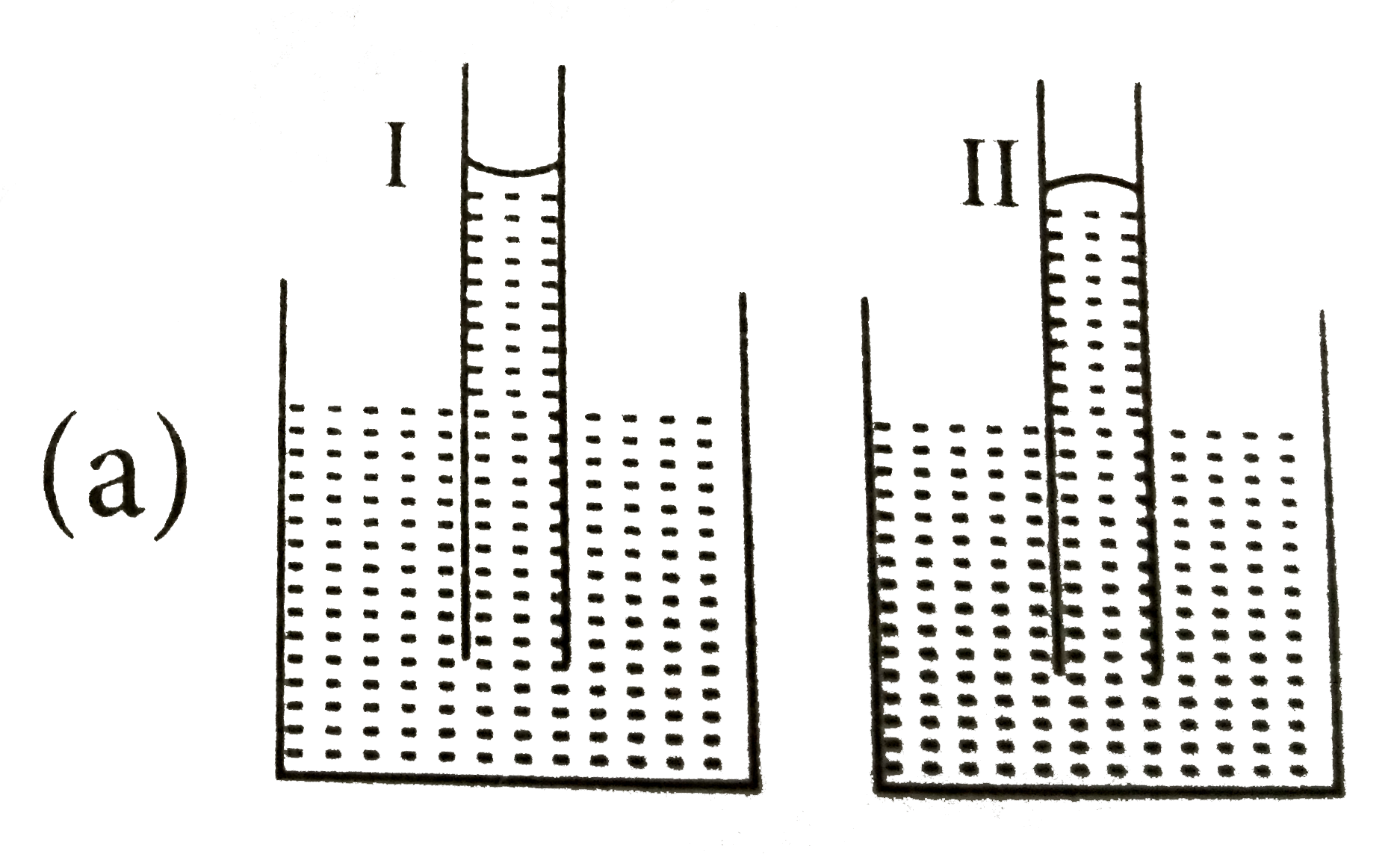 B
B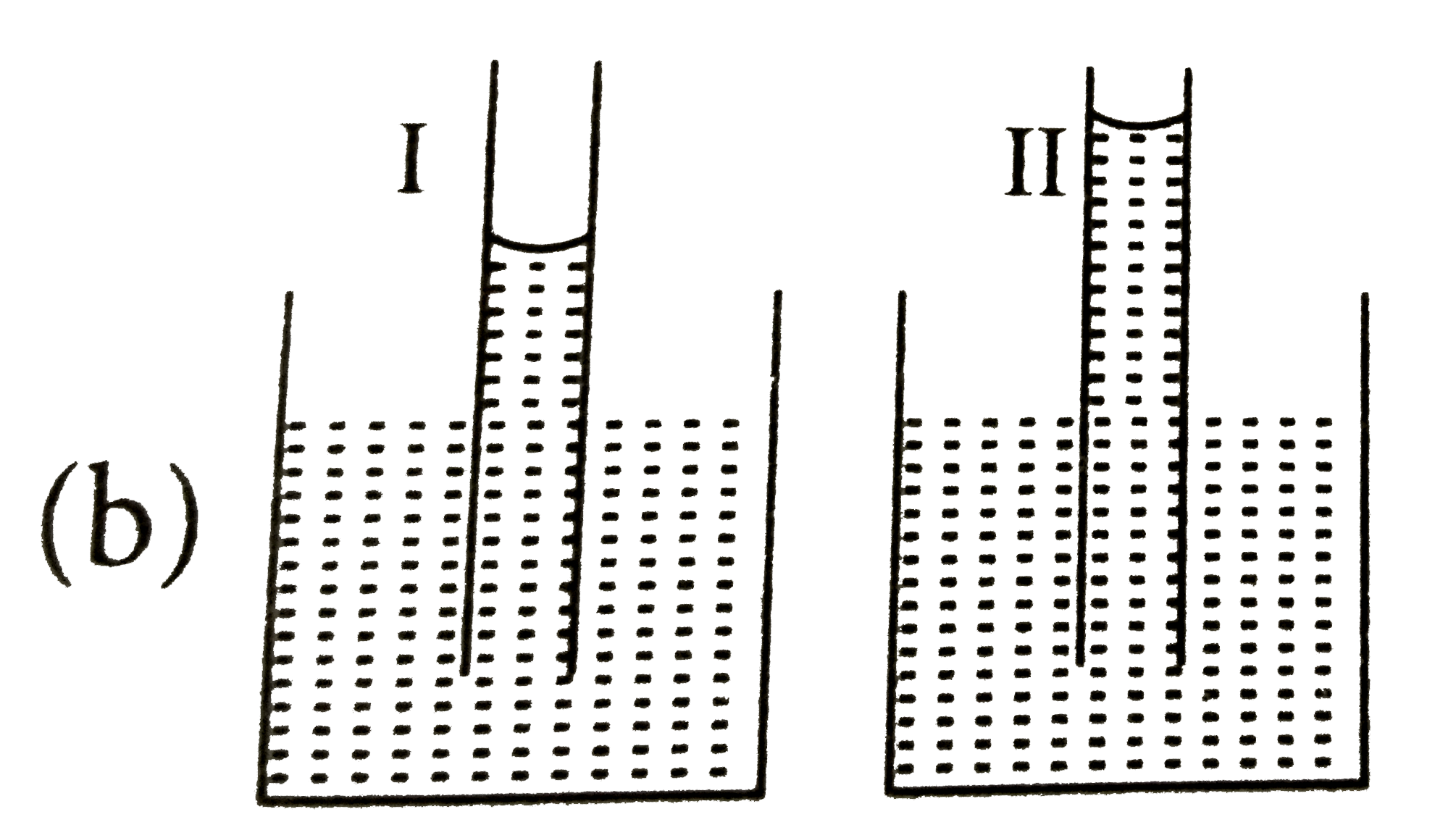 C
C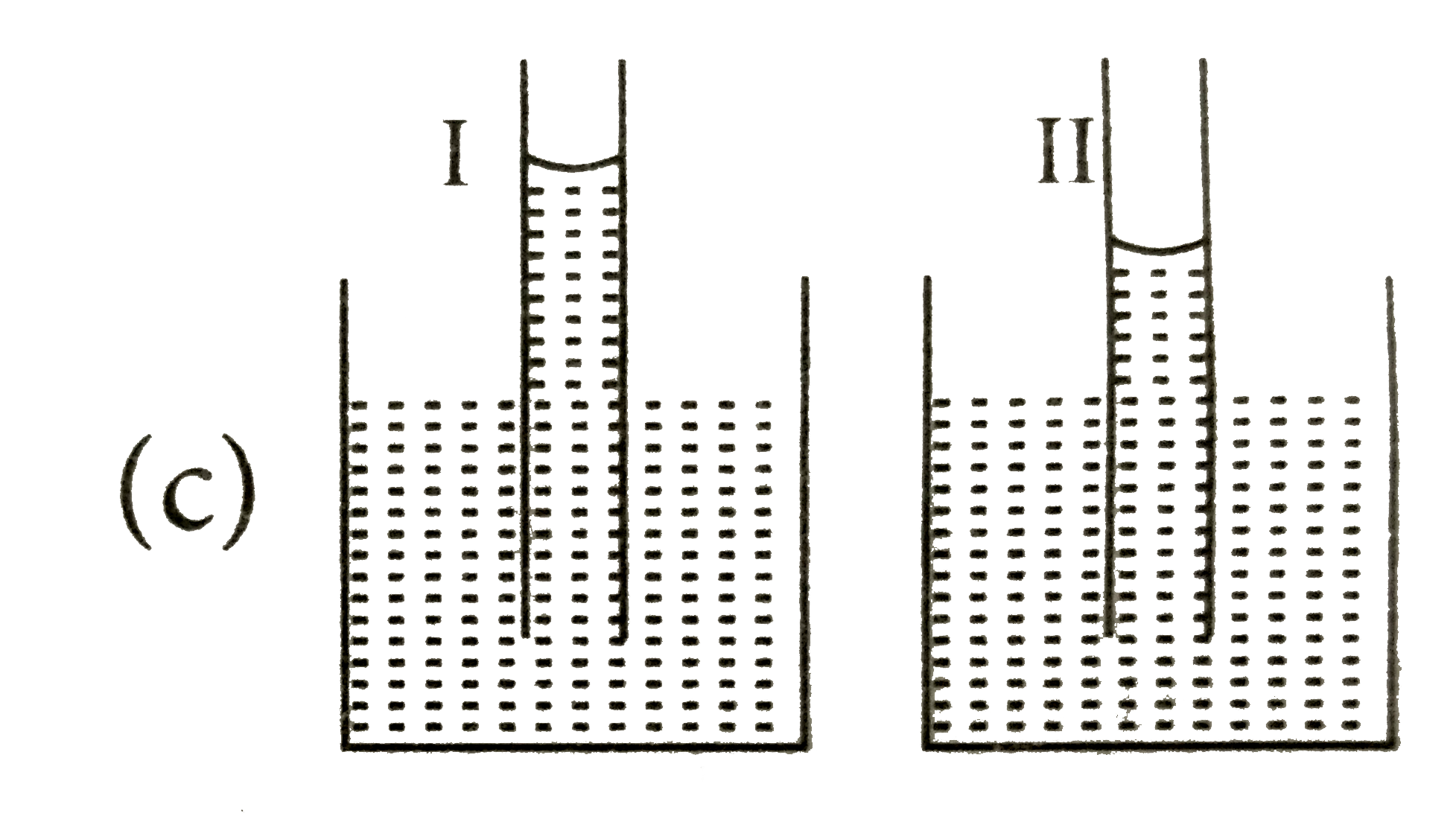 D
D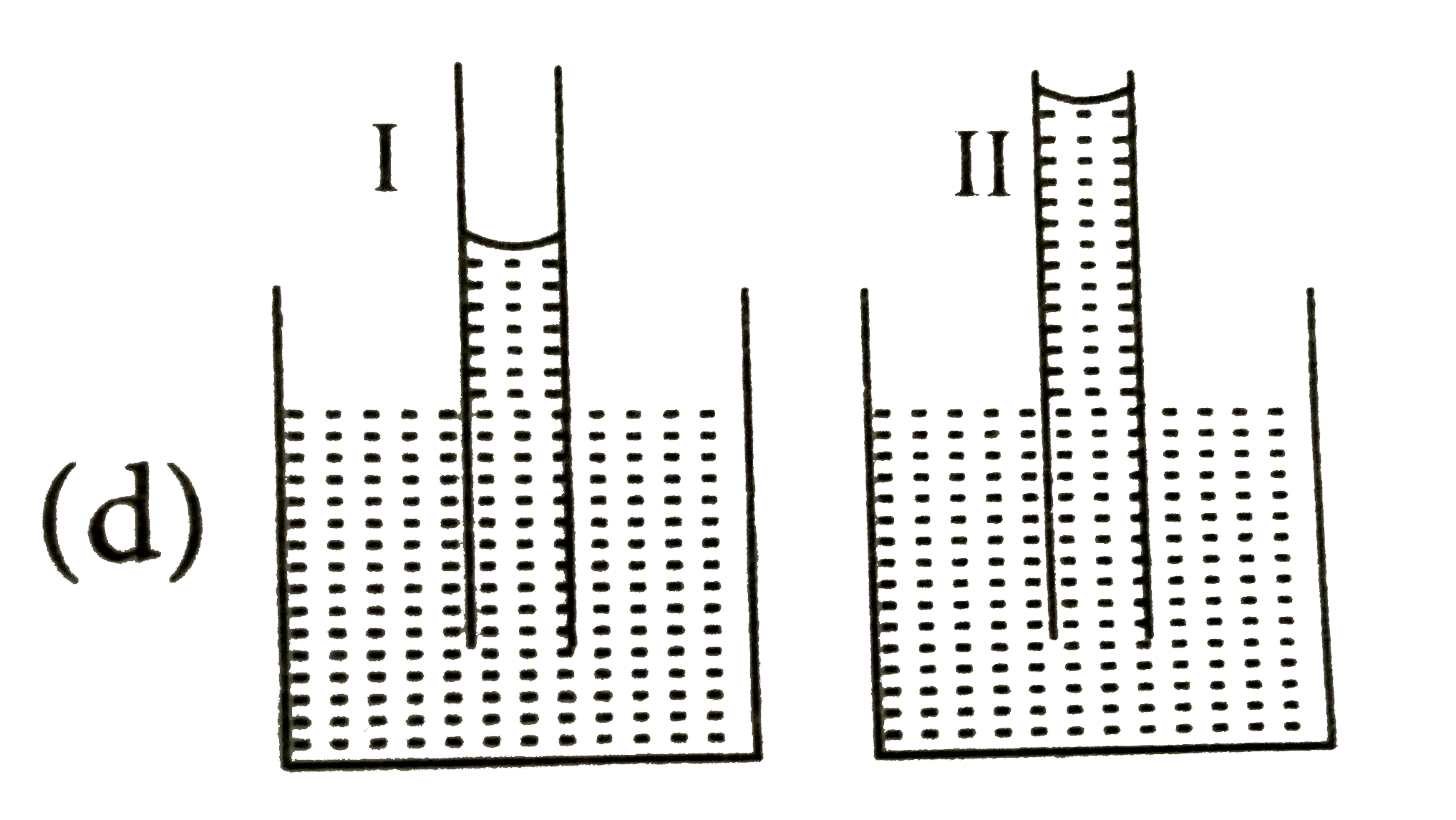
A capillary tube is dipped in water to a depth and the water rises to a height h(<l) in the capillary tube. The lower end of the tube is closed in water by putting a lower over it. The tube is now taken out and the thumb is removed from the lower end and it kept open. The length of liquid column in the tube will be
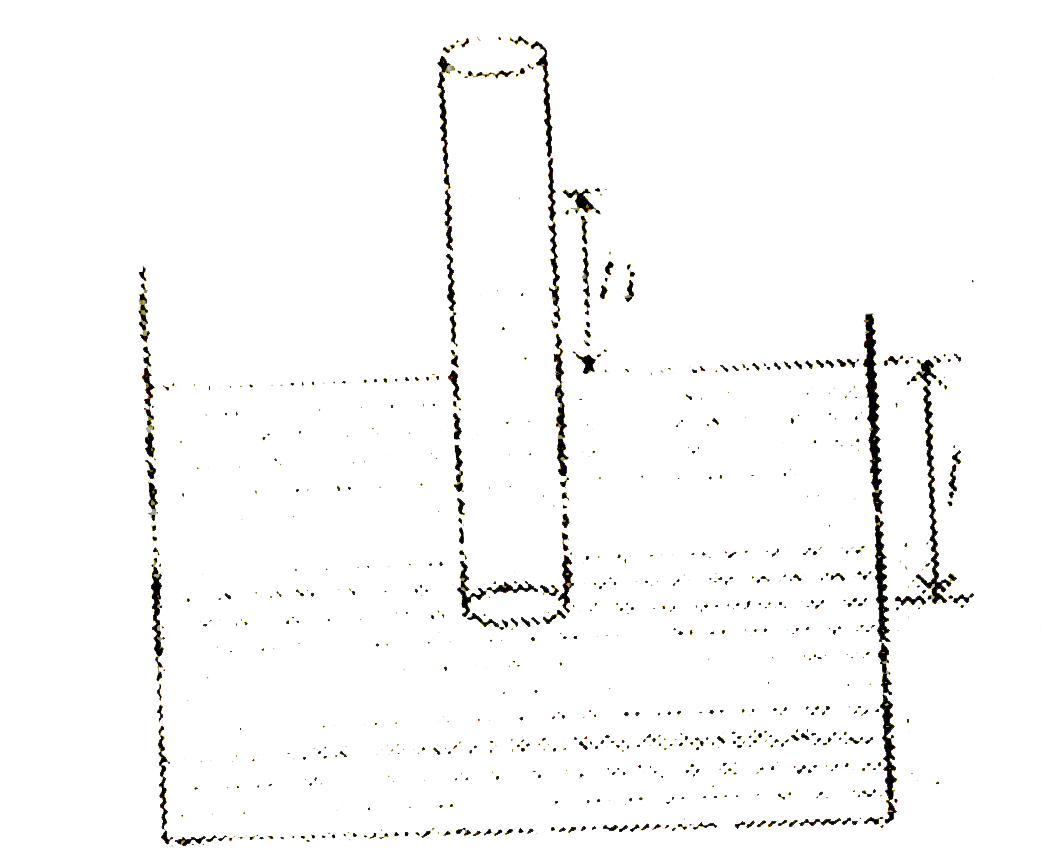
View SolutionA capillary tube is dipped in water vertically. It is long enough for the water to rise to the maximum height h in the tube. The length of portion immersed in water is I<h. The lower end of the tube is closed and then the tube is taken out and opened again. Will all the water flow out of tube? Explain.
View SolutionIf a capillary tube in dipped in a state of weightlessness how will the rise of water in it be different to that observed in nomal conditions?
View SolutionThe lower end of a glass capillary tube is dipped in water. Water rises to a height of 9 cm. The tube is then broken at a height of 5 cm. The height of the water column and angle of contact will be
View SolutionThe lower end of a capillary tube is dipped into water and it is seen that the water rises through 7.5 cm in the capillary. Find the radius of the capilary. Surface tension of water =7.5×10−2Nm−1. Contact angle between water and glass =0∘.Takeg=10ms−2.
View SolutionA capillary tube (A) is dipped in water. Another identical tube (B) is dipped in a soap-water solution. Which of the following shows the relative nature of the liquid columns in the two tubes?
View SolutionWhen a long capillary tube is immersed in water, mass M of water rises in capillary. What mass of water will rise in another long capillary of half the radius and made of same material?
View Solution

